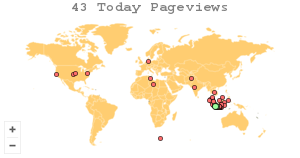MENELISIK MAKNA SYAJARAH DALAM AL-QUR’AN
(Analisis Semantik Toshihiko Izutsu)
DOI:
https://doi.org/10.47498/bashair.v3i2.2284Keywords:
Shajarah, Semantics, Thoshihiko IzutsuAbstract
The ongoing discourse regarding the interpretation of "syajarah" in the Qur'an lacks a consensus. This is evident in the diverse array of perspectives and explanations surrounding its meaning. Consequently, the author delves deeper into an examination of the semantic analysis of "syajarah" using Toshihiko Izutsu's approach. The selection of this methodology is rooted in Izutsu's semantic framework, which provides a platform for exploring the nuanced meanings of a word. A pivotal aspect of this investigation is to scrutinize the semantic dimensions of "syajarah." The author employs a qualitative methodology, specifically a literature study, to navigate this exploration. The data utilized encompasses information gleaned from various sources, including books, journal articles, and electronic documents, bolstering the research process. This inquiry reveals that the fundamental meaning of "syajarah" is 'tree.' The syntagmatic relational meanings include associations with Allah, Naha, Syaitan, Zalim, and Masalan. In terms of paradigmatic meaning, the words Nabat and Zuru' come into play. While the synchronic and diachronic meanings of "syajarah" have experienced temporal shifts, the core meaning has remained relatively stable. Furthermore, diverse interpretations generally align with the basic meaning of "syajarah," with the exception of Quraish Shihab, who suggests a figurative understanding in the context of the Prophet Adam's story. Notably, when coupled with the word "taqrabu," the figurative interpretation of "syajarah" emerges, implying actions that may lead to social harm.
References
Aida Nahar. (2017). Konsep Hubb Dalam Al-Qur’an (Analisis Semantik Toshihiko Izutsu) - Institutional Repository UIN Sunan Kalijaga Yogyakarta [UIN Sunan Kalijaga Yogyakarta]. https://digilib.uin-suka.ac.id/id/eprint/28387/
Al-Ashfahani, A.-R. (2017). Al-Mufradat fi Gharibil Qur’an (R. Nurhadi (ed.); 1st ed.). Pustaka Khazanah Fawa’id.
Al-Maragi, A. M. (1992). Terjemah Tafsir al-Maragi (Zianul Farid Ak (ed.); Terj. K. A). CV. Toha Puta Semarang.
Asy-Syaukani, I. (2008). Tafsir Fathul Qadir (E. Fr (ed.); Terj. Amir). Pustaka Azam.
Ath-Thabari, I. J. (2007). Tafsir Ath-Thabari (B. H. Amin (ed.); Ahsan Aska). Pustaka Azam.
Az-Zuhaili, W. (2013). Tafsir Al-Munir (A. H. Al-Kattani (ed.)). Gema Insani. http://www.gemainsani.co.id
Baqi, M. F. A. (2002). Mu’jam al Mufahras li al Faz Qur’an Karim (Muhammad Sa’id al Lahm (ed.)). Dar El-Marefah. http://www.marefah.com/
Darwis, M. (2011). I’rab al-Qur’an al-Karim wa Bayanuhu. Dar al-Yamamah.
Fahriana, L. (2019). Garuda - Garba Rujukan Digital. https://garuda.kemdikbud.go.id/documents/detail/1514793
Husna, R., & Sholehah, W. (2021). Melacak Makna Nusyuz Dalam Al-Qur’an: Analisis Semantik Toshihiko Izutsu. Jurnal Islam Nusantara, 05(1), 131–145. https://doi.org/10.33852/jurnalin.v5i1.330
Izutsu, T. (1997). Relasi Tuhan Dan Manusia: Pendekatan Semantik Terhadap Al-Qur’an (1st ed.). Tiara Wacana.
Jalaluddin al-Mahalli, J. as-S. (2008). Tafsir Jalalain. Sinar Baru Algensindo.
Katsir, I. (2004). Tafsir Ibnu Katsir. Pustaka Imam Asy-Syafi’ i.
Kemdikbud. (2016). Kamus Besar Bahasa Indonesia. CV Adi Perkasa.
Kemenag. (2019). Al-Qur’an dan Terjemahannya (1st ed.). Lajnah Pentashihan Mushaf Al-Qur’an.
Kridalaksana, H. (1993). Kamus Linguistik. Gramedia.
Kridalaksana, H. (2005). Mogin-Ferdinand de Saussure (1857-1913): Peletakan Dasar Strukturalisme dan Linguistik Modren. Yayasan Obor Indonesia.
Laily, R. N. (2021). Wasaṭ dan Derivasinya dalam Al-Qur’an: Analisis Semantik Toshihiko Izutsu. Mashahif: Journal of Qur’an and Hadits Studies, 1(1), 2021. http://urj.uin-malang.ac.id/index.php/mashahif/article/view/782
Maknuna, A. A. (2015). Konsep Pakaian Menurut Al-Qur’an (Analisis Semantik Kata Libas, Siyab dan Sarabil dalam Al-Qur’an Perspektif Toshihiko Izutsu).
Manzur, I. (2009). Lisanul Arab (A. M. A. Wahab (ed.)). Dar Ihya al Thurath al Arabiy.
Muhammad Najib. (2015). Kisah Nabi Adam Alayhi Al-Salâm Dalam Al-Qur’an. AL ITQAN: Jurnal Studi Al-Qur’an, 1(1). https://doi.org/10.47454/itqan.v1i1.9
Mukti, A. (2010). Kata al-Syajar dalam al-Qur’an: Studi Penafsiran al-Tabari dalam kitab al-Jami’ al-Bayan an Tanwil Ay al-Qur’an. UIN Sunan Kalijaga Yogyakarta.
Munawwir, A. W. (1997). Al-Munawwir (Kamus Arab-Indonesia) (14th ed.). Pustaka Progresif.
Pajarudin, A. M. (2018). Konsep Munafik Dalam Al-Qur’an (Analisis Semantik Toshihiko Izutsu). Skripsi, Program Studi Ilmu Al-Qur’an Dan Tafsir Fakultas Ushuluddin, UIN Syarif Hidayatullah, 39–40.
Rahman, K. A. S. (2010). Kamus Modren Arab-Indonesia al-Kamal (Pertama, Vol. 1). Pustaka Progresif.
Razi, I. M. al. (1993). Tafsir al-Kabir Mafatih al-Ghaib. Dar al-Fikr.
Save M, D. (2013). Kamus Besar Ilmu Pengetahuan. Lembaga Pengkajian Kebudayaan Nusantara.
Shihab, M. Q. (2011). Tafsir al-Misbah. Lentera Hati.
Thalhah, A. B. A. (2009). Tafsir Ibnu Abbas (F. I. Edy Fr, M. Sultan Akbar (ed.); Terj. Muhy). Pustaka Azam.
Zulfikar, E. (2018). Makna Ūlū Al-Albāb Dalam Al-Qur’an: Analisis Semantik Toshihiko Izutsu. Jurnal THEOLOGIA, 29(1), 109–140. https://doi.org/10.21580/teo.2018.29.1.2273
Downloads
Published
Issue
Section
License
Authors who publish articles in Basha'ir: Jurnal Studi Al-Qur'an & Tafsir agree to the following conditions:
- The author retains copyright and grants the Basha'ir Journal the right from the first publication with the work simultaneously licensed under a Creative Commons Attribution-ShareAlike 4.0 International (CC BY-SA 4.0) license that allows others to make changes, adjust and build on the work with recognition of the author's work and initial publication in the Journal.
- Authors are allowed to copy and redistribute published versions of works in journals (for example, posting them to institutional repositories or publishing them in a book), with recognition of their initial publication in Basha'ir: Jurnal Studi Al-Qur'an & Tafsir.
- Authors are allowed and encouraged to post their work online (for example, in institutional repositories or on their websites) before and during the submission process, as it can lead to productive exchanges, and increase citations of published works






